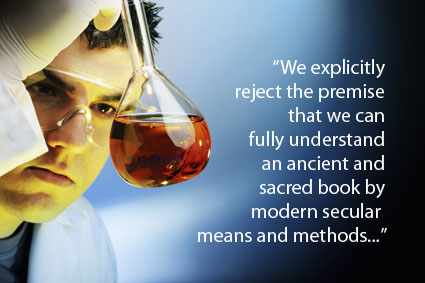Typology, Symbol and the Christ

A quote from Theological Poetics: Typology, Symbol and the Christ, by Warren Gage of Knox Seminary:
A modern introduction to biblical typology should begin inductively with several examples of certain shadows and types from Old Testament passages widely acknowledged to be prefigurative in character, seeking to understand those types as interpreted by the authors of the New Testament. After a number of such passages are examined, an index of the “criteria of certainty” should be proposed to distinguish legitimate “types” from suspected “allegories.” Principles of interpretation should then be announced, along with the obligatory caveats necessarily qualifying tentative proposals, all of which should be rationally defensible and clearly recognizable to reputable scholarship in the field.
Our approach will be quite different. We explicitly reject the premise that we can fully understand an ancient and sacred book by modern secular means and methods. We must begin by attempting to enter into the world of the Bible itself.[1] This book is premised on the faith conviction, shared by the New Testament authors, that all the Scripture is about Jesus (John 5:39). We will presuppose that Moses and all the prophets wrote about the sufferings and glory of Christ (Luke 24:25-27; Acts 28:23). We will assume that the prophets of old were seeking to understand the person or time the Spirit of Christ within them was signifying the sufferings of Christ and the glories to follow (1 Pet 1:10-12). We will therefore begin deductively. We will turn the modernist project of typology on its head.
Instead of attempting to understand the reality by the shadows, we will seek to understand the shadows by the reality. To adapt a classical metaphor, we will leave behind the skiagraphic images of the cave to gaze boldly at the radiance of the Son. Having beheld the Light that extinguishes our blindness, we will better be able to see how all the Scripture speaks about Jesus.
- Our approach affirms an explicitly historical-grammatical approach to Biblical exegesis. However, while we believe conservative scholarship in modernity does an admirable work of analyzing the text of Scripturegrammatically, it is less capable, in our judgment, of reading the Biblehistorically. The modern exegete is generally analytic, but less synthetic than ancient texts require. His interpretation is literal, but less poetic. He is trained to think particularly within individual texts, but not canonically within the Bible. Goethe envisioned the approach we are attempting when he commented, “Wer den Dichter will verstehen, muss in Dichters Lande gehen,” (Whoever will understand the poet must travel to the country of the poet). In other words, if we are to understand the types of the Bible, we must read the Bible through pre-modern eyes. We must consciously strive to enter into the mundus imaginalis of the first recipients of sacred Scripture. Only by this means can we read the Bible historically, as well as grammatically.


























July 9th, 2009 at 7:42 am
Mike:
What are you quoting this from? Is this a book by Dr. Gage, or a paper? Where can I get it?
Eric
July 9th, 2009 at 9:53 am
Hi Eric
It is (currently) an excellent paper. You can request it from Dr Gage.